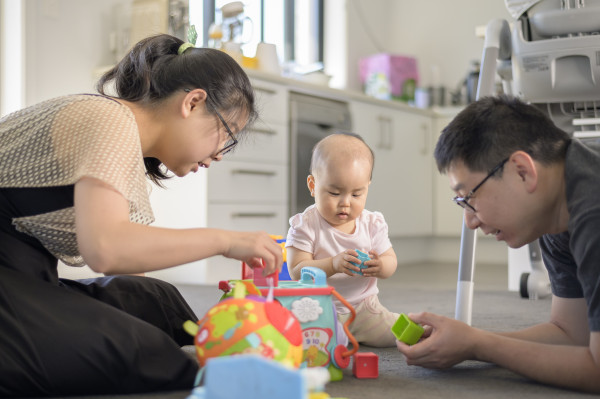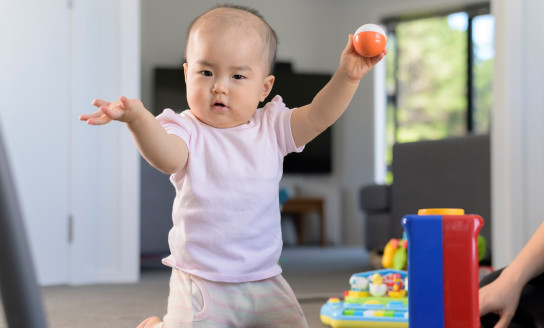When you’re buying toys
- The smaller the child, the bigger the toy should be. Children under three may put things in their mouths, up their noses and in their ears. If your child’s under three, don’t let them play with toys that:
- are smaller than the length of your little finger
- have small parts, or that release small parts when dropped or pulled. Children under three don’t have a well-developed coughing reflex and will choke easily on small things.
- Toys should have:
- a safe surface - check that paints used are non-toxic
- safe fillings that are non-toxic, and don’t come out easily
- smooth edges - toys with sharp points or rough edges could badly scratch or cut a child.
- soft toys should be fire resistant.
- Toys shouldn’t be too loud – check the toy before you buy it or gift it. If it’s too loud for you, it’s too loud for a child.

Choosing the right toys for the child’s age
For children aged 0 to six months
Look for toys that can be chewed, sucked, and tugged, and toys that big enough so the baby can’t fit it all in their mouth.
Good choices include: mobiles with interesting shapes and colours (but keep the mobile out of reach), soft toys, and rattles.
For children aged six months to one year
Choose toys that are strong, easily cleaned, and with no detachable parts.
Good choices include: pull and push toys, floating bath toys, large building bricks or blocks, soft toys, large, soft balls, cars and trucks marked safe for children under one year of age.
For children aged two to three years
Look for toys to develop a child’s coordination.
Good choices include: crayons, felt pens, picture books, sorting games, single musical instruments, balls, hand puppets, wheel barrows, slides, sit-and-ride toys.
For children aged three to five years
Look for toys that are used for imaginative games.
Good choices include: toys to dress up, toy telephones, doll houses, farm sets, cars, dump trucks, trains, tricycles, dress-up costumes, balls, buckets and spades, felt pens, paints, chalk, and paper. If buying ride on toys, think about getting a helmet too.
Toys sold in New Zealand must meet the mandatory safety standard AS/NZS ISO 8124.1
Toy boxes
Toy boxes help keep rooms tidy, but they can also be dangerous. Children can be injured if the lid falls on their head while they’re looking in the box. Fingers can also be jammed or crushed. Toy boxes are safer without lids.
Make sure that:
- any lid is light and can be removed completely
- locks can be opened easily from inside
- there’s a 1.2cm gap between the lid and the box when the lid is closed - this will stop fingers getting crushed.
Always:
- remove any heavy lids
- make sure the toy box can’t be used by the child as a step to reach dangerous places or objects
- replace worn hinges.
High-powered magnet toys
High-powered magnet ‘toys’ are very dangerous for children and can cause severe damage or death if swallowed. These magnets have been banned for sale in New Zealand since 2014, but it’s possible they could still be bought via overseas websites or found in the community.
Make sure young tamariki cannot get hold of high-powered magnets in your home.
High-powered magnets – product safety
